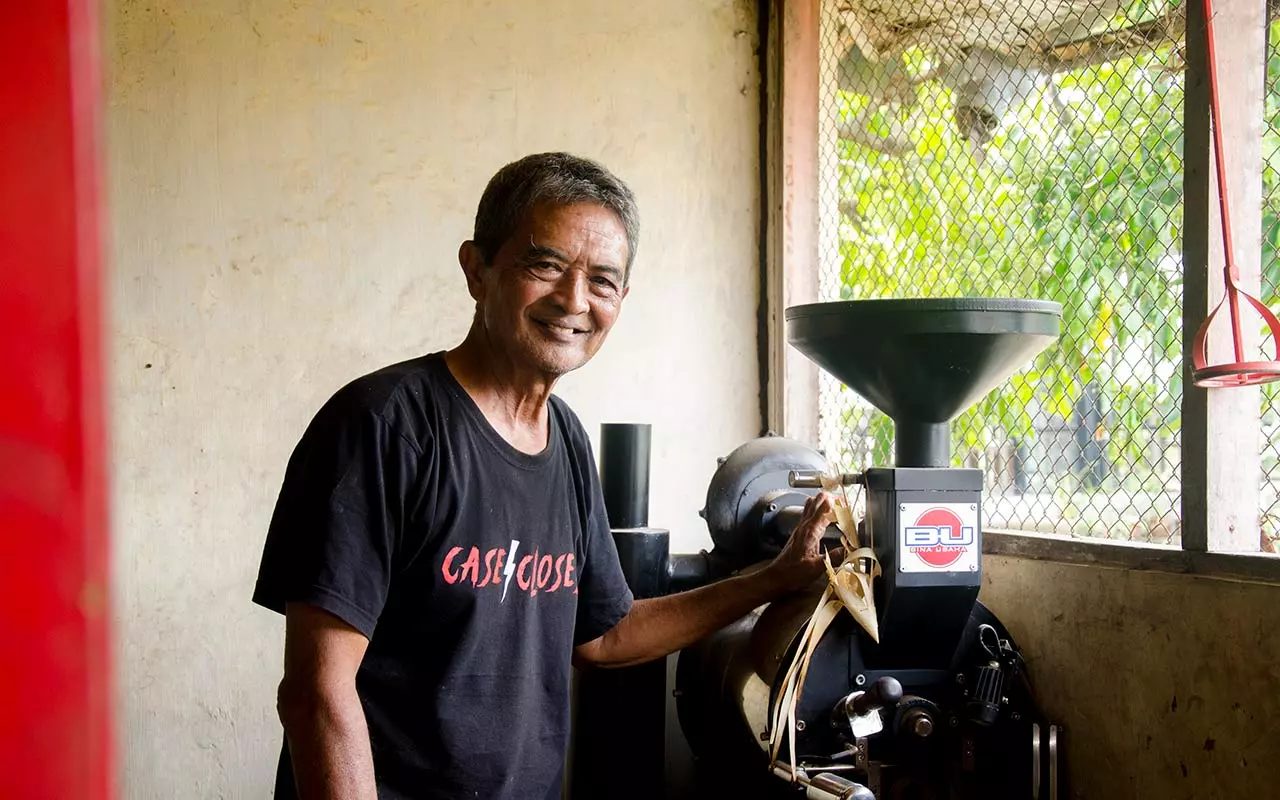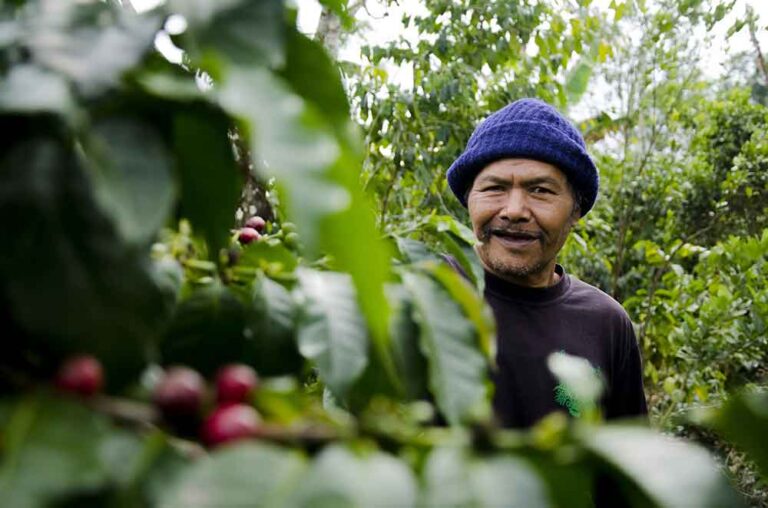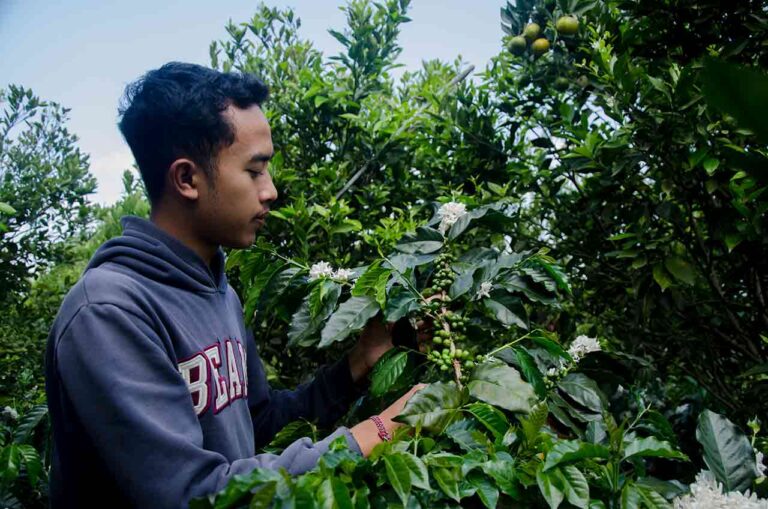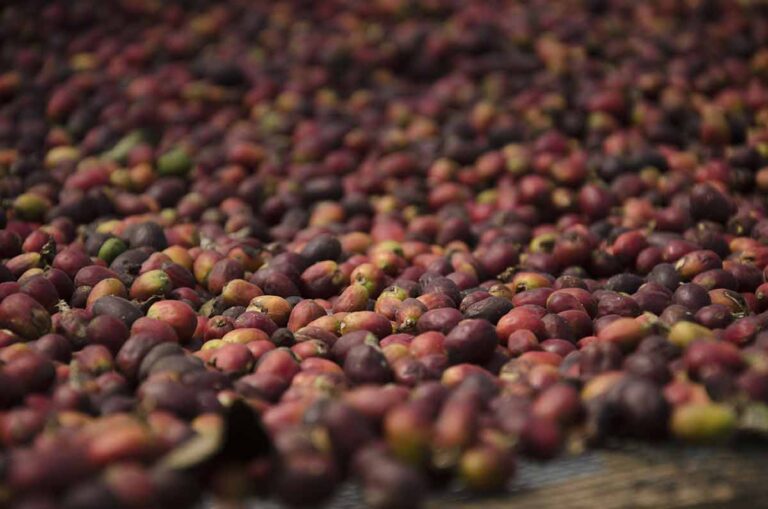“I invite them to plant coffee again, without chemical fertilizers, pesticides, and red pick harvest. Just that!” said Putu Ardana opening the chat.
That morning, he wore hiking sandals, cargo pants, and a black t-shirt, looking casual. His appearance is reminiscent of the profile of a nature-loving student who is practical and alert. Don’t imagine students in their 20s. But let’s just say it’s a bit more senior.
“Yes, this is what my daily life is like, enjoying an independent life,” he said with a friendly, happy smile.
His hair is already gray, but his straight body posture gives the impression of a figure who is diligent in physical activity and agile.
Putu Ardana is a coffee farmer in Munduk Village, Buleleng, and is also driving conservation efforts in the Alas Mertajati and Lake Tamblingan Areas, Buleleng, North Bali.
I was lucky enough; he was willing to accompany me to chat while he was busy preparing Arabica coffee shoots that would be implanted into robusta branches.
“Robusta’s roots are better than Arabica’s. “But Robusta is less productive in high areas like Munduk,” he said.
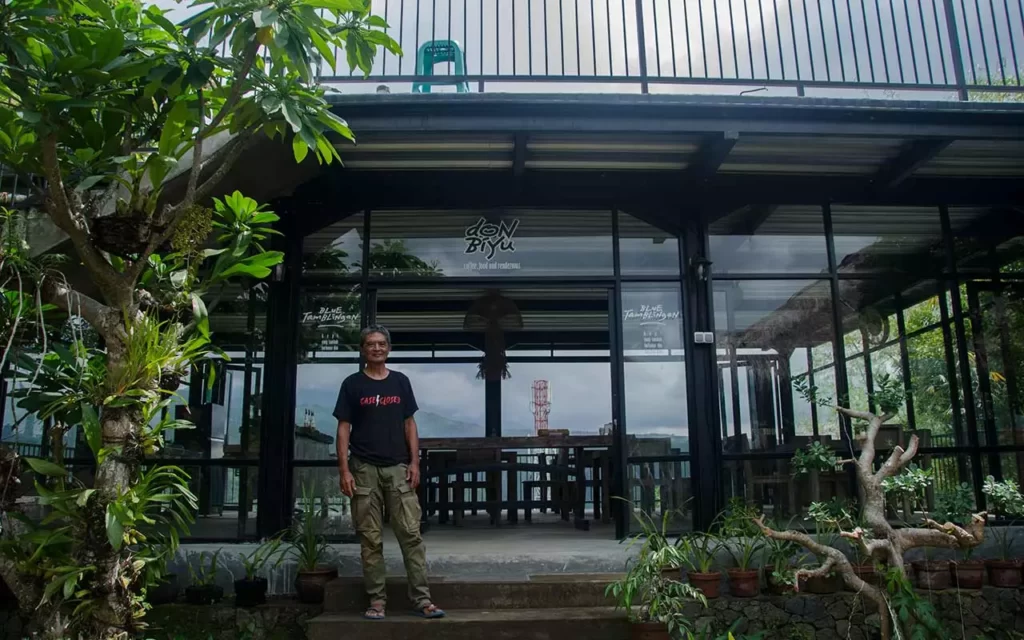
We chatted at Café Don Biyu, his coffee shop, which, since the COVID-19 pandemic, has been forced to stop operations. However, this coffee place, which overlooks a beautiful panorama of the valley with a backdrop of four mountain peaks, still has an aura that is in harmony with the natural surroundings.
We sat on a bench on the open back terrace. The beautiful view in front of us was marred by the telecommunications provider’s tower poles, which stood naked and had no manners. Is it difficult to add a few ornaments, such as leaves or whatever, that can at least disguise the steel frame in order to minimize damage to the viewing area? Oh, forget it.
The café building on the edge of the valley is quite large and has two floors. The top floor is an open space for drying the coffee harvest. There is a diagonal ladder on the front side to go up there.
Meanwhile, below it is a transparent glass room with rows of tables and benches made of solid wood. We have to climb several steps with cement floors to enter this fun coffee place.
I just talked to myself; this person is truly blessed with a very beautiful place. Especially without that rude steel tower.
A treat of boiled ketip bananas, which are still emitting hot steam, comes with hot brewed coffee. Served in the middle of the table, it filled the gap that remained between the enchanting expanse of the green valley and the cold morning air.
“This is my breakfast; it doesn’t have to be rice, just two ketip bananas,” he said while inviting me to enjoy snacks and brewed coffee from his organic garden.
Coffee is a common treat for guests in this village, dating back hundreds of years. The Dutch brought Arabica coffee seeds from Java to be planted in Munduk Village and its surroundings. This area has an altitude above 900 meters above sea level and the climate is ideal for Arabica coffee.
Perhaps from the 1800s to the 1970s, Arabica coffee was still the main commodity in Munduk Village farming.
According to historical records, in 1825, the harvest of Balinese coffee plantations was exported to the Netherlands along with coffee from Java, Sulawesi, and Sumatra. It is very likely that coffee from Munduk Village also participated.
At that time, every coffee harvest season, many residents from South Bali, such as Ubud and Gianyar, came to Munduk to work as coffee pickers. Many coffee pickers labor was accompanied by the emergence of many seasonal food traders who opened stalls in Munduk Village.
Now, it’s the opposite. Due to the incessant development of tourism, South Bali has become a stronger magnet.
According to Putu Ardana, in his childhood, he saw that almost every house in Munduk Village had a large yard and was always a place to dry coffee.
“The coffee harvest was so abundant, it was as high as my knees,” he said, describing how thick the layers of coffee cherries were being dried in the sun.
At that time, Munduk Village was very synonymous with Bali Coffee.
In fact, in Munduk, there is the Subak Abian Temple which has become synonymous with a coffee temple. Because every time there is a tumpek wariga ceremony, community members make offerings to Dewa Sangkara, who is believed in Hindu tradition to be the creator of plants. Coffee is an ever-present filling in offerings.
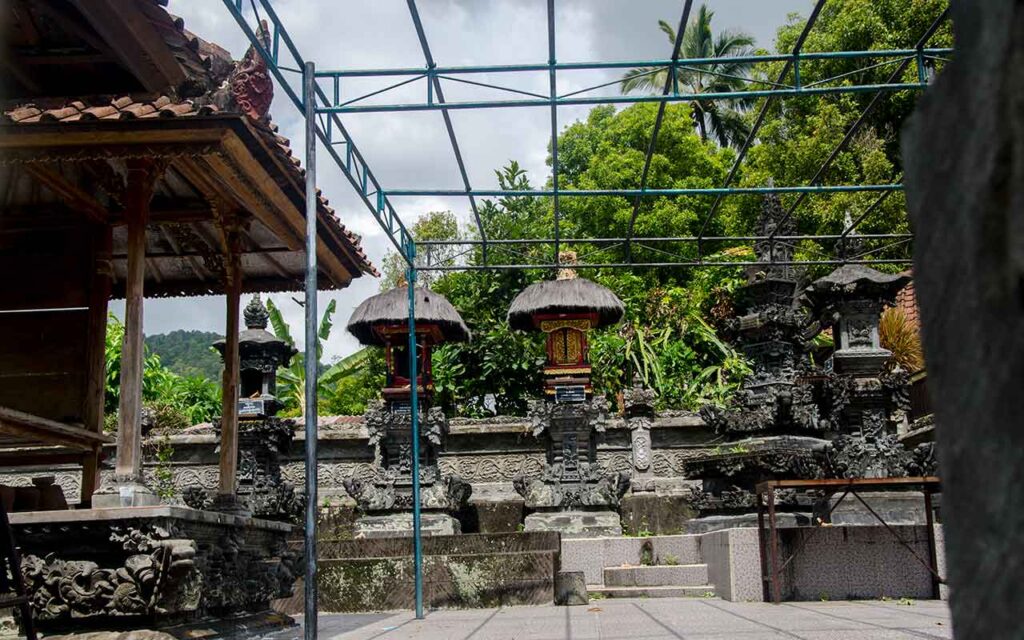
Since graduating from Senior High School (SMA), Putu Ardana has left Munduk for quite some time to continue his studies. In 1983, he had to be willing to leave his beautiful village to study at the Faculty of Economics, majoring in Accounting, Gajah Mada University, Yogyakarta.
After graduating from college, together with his friends, he built a business making creative t-shirts called “Jaran Etnik.” His business grew rapidly, even becoming a pioneer in the emergence of similar businesses in Yogyakarta as well as other regions in Indonesia.
“Dagadu used to print its t-shirts at Jaran Etnik,” he said, telling about one of the creative t-shirt manufacturing brands that is currently popular in Yogyakarta.
Even though his business was booming at the time, he finally decided to return to Munduk Village. But he didn’t explain in detail why. What is certain is that it is not easy to leave friends and a business that is on the rise.
“My father called me home,” he said briefly.
Following his father’s call, he returned to Munduk and started working as a farmer. Dealing with garden activities and various activities in the community that are part of the daily lives of Balinese people.
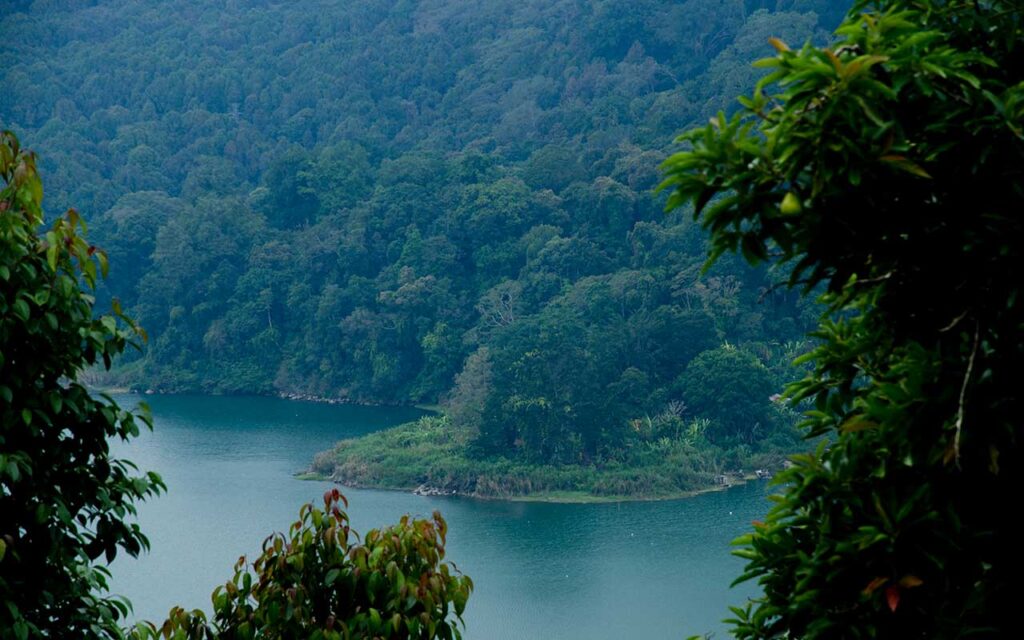
Munduk, traditionally, is part of the Catur Dalem Tamblingan Traditional Village. There are four interrelated traditional villages, namely; Munduk, Gesing, Umajero, and Asah Gobleg.
Putu Ardana began to discover that there were many increasingly worrying changes in the landscape of the Alas Mertajati and Lake Tamblingan areas. The area is believed to be a sacred place by the indigenous people of Catur Village. Exploitation of land for vegetable and flower farming using chemical fertilizers and pesticides occurs without control and is massive.
Apart from that, according to Putu Ardana, the social conditions of society have also begun to shift to become more individualistic-capitalistic.
“Farmers have become consumers with a consumer mentality, who are used to whining and raising their hands, hoping for fertilizer subsidies from the government,” he said sadly.
In fact, from Putu Ardana’s point of view, farmers must have the mentality of producers who have self-respect and are persistent in meeting their needs independently. He wants to restore the mentality of farmers to be smart in using what the natural environment has provided wisely. Because everything is already available there.
“Are there trees in the forest that are withering or not growing well? Who’s the fertilizer?” he asked bitterly.
Putu Ardana invited farmers to start abandoning the use of chemical fertilizers. Because there are alternative compost fertilizers or fertilizers made from organic materials that are widely available in the surrounding environment.
Of course, it’s not easy. It takes a while to find an effective way. Until he came up with the idea of returning Munduk Village and its surroundings as a coffee center.
Because coffee plants have roots that are much better than those of flower or horticultural plants at binding the soil. Apart from that, coffee plantations need shade trees, whose root systems are also stronger and better at withstanding rainwater absorption.
Organic specialty coffee is the most effective choice to encourage farmers to return to coffee farming. Because the price of coffee is much more expensive, it could be a rational choice for farmers to switch from horticulture and flower gardening to coffee plants. In fact, coffee could be a reasonable conservation medium, he thought. It was from there that Putu Ardana’s conservation strategy emerged.
For coffee products to fall into the specialty category, education is needed on how to farm, nurse, harvest, and handle them better post-harvest. You need extra patience to carry out this strategy. Especially facing farmers’ resistance and reluctance until they want to practice it.
Until now, it has been seven years since Putu Ardana started inviting farmers to return to planting Arabica coffee. Now, the number of farmers who are interested in growing coffee again in new ways has begun to increase.
“Not many yet, but at least someone has started calculating; the results are indeed more profitable than horticulture or flower gardening,” said Putu Ardana.
Putu Ardana is ready to buy the coffee harvest at a higher price. The conditions are coffee from a farm that does not use chemical fertilizers, no pesticides, and only picks red cherries. This gives farmers the confidence to practice organic coffee farming.
“Now there are many other buyers who buy at high prices. So you don’t have to sell it to me if someone buys it at a better price,” he said.
“For me, the important thing is that they want to grow coffee again,” he said, laughing happily to see that conservation strategies through specialty coffee farming are starting to show results.
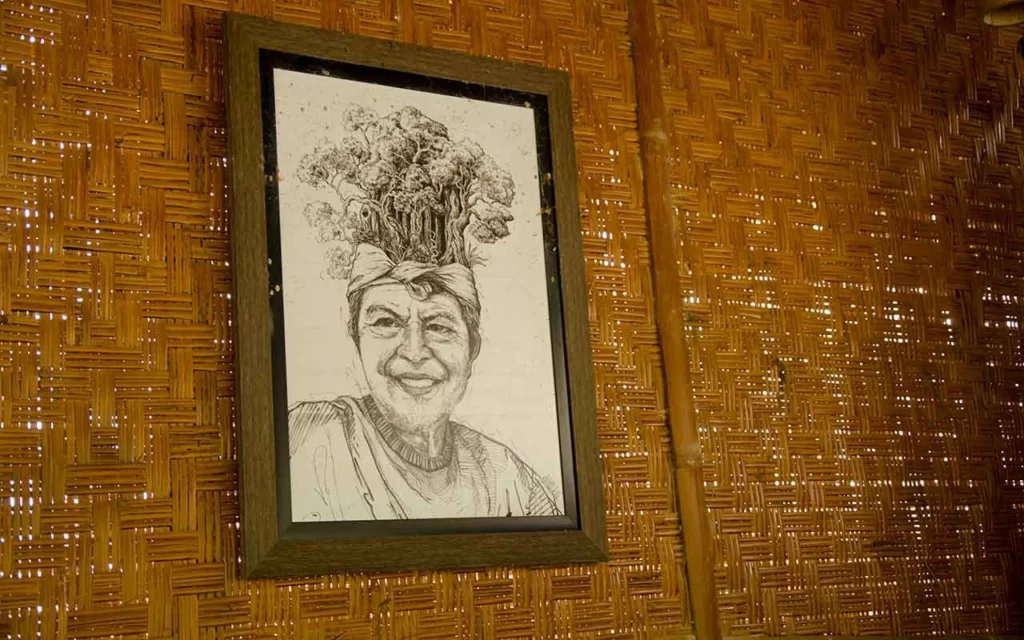
In order to further popularize specialty coffee from the Munduk area and its surroundings, Putu Ardana built the “Blue Tamblingan” brand. The name “Blue Tamblingan” was proposed by Putut EA, a friend from Yogyakarta who loves coffee and often visits Munduk. This writer and head of the online media Mojok.co was inspired by the exclusive Blue Batak coffee because of its limited harvest.
Blue Batak is Arabica coffee grown in small farms, which are usually behind the farmers’ houses in Lintong Nihuta. The southern side of Lake Toba, North Sumatera, has a hilly landscape with an ideal altitude and temperature for Arabica coffee plants.
Blue Tamblingan is also an exclusive coffee because it is only produced on the limited land around Lake Tamblingan. Special with the soft-acidic taste of orange and the sweet taste of cempedak fruit.
I glanced at the cup of Blue Tamblingan-brewed coffee, which still had half left on the table. I slurped it until it filled my mouth. Now the taste is not limited to exploring the sense of taste; it takes me far along Alas Mertajati, through the dense trees and floating above the cool gleam of Lake Tamblingan. Coffee wrapped in the story of nature conservation always has a special taste.
It didn’t feel like our conversation was interrupted by a moment of silence. It’s like there’s a sudden feeling of confusion. At first glance, Putu Ardana seemed to cast his gaze towards the slopes of Mount Sanghyang, far away at the end, just a little below the skyline. But his calm demeanor seemed to be quite successful in covering up his deep anxiety.
“Now we are fighting for the return of Alas Mertajati’s status as a customary forest,” he said, as his eyes quickly looked down at the horizon.
The application has been registered with the Ministry of Environment and Forestry. However, the Ministry of Environment and Forestry requires the fulfillment of a number of conditions, one of which is approval from the Regent of Buleleng.
Putu Ardana, together with the people of the Catur Dalem Tamblingan Traditional Village, are currently still waiting for a signature from the Regent of Buleleng.
However, Buleleng Regent Putu Agus Suradnyana never gave his signature until he was replaced by Acting Regent Ketut Lihadnyana. This official is the same; there is no sign of supporting the efforts of the Catur Village indigenous community. It seems that hope is still far from reach.
For the Catur Desa traditional community, Alas Mertajati and Tamblingan Lake are sacred areas and must be protected. Currently, with its status as a Natural Tourism Park area, the 1300-hectare forest is vulnerable to exploitation to make money from the tourism business alone.
This living source area, which irrigates one-third of the western island of Bali, should not be left without adequate protection.
“In the past, tourism emerged as a result of Balinese behavior and culture. “Now it’s the other way around; tourism has become the main goal, and the culture and behavior of the Balinese people have to adapt,” complained Putu Ardana in an annoyed tone.
“The culture and sacredness of the Balinese people are turned into tourism spectacles, such as monkey mask shows,” he said in a loud voice, holding back his anger.
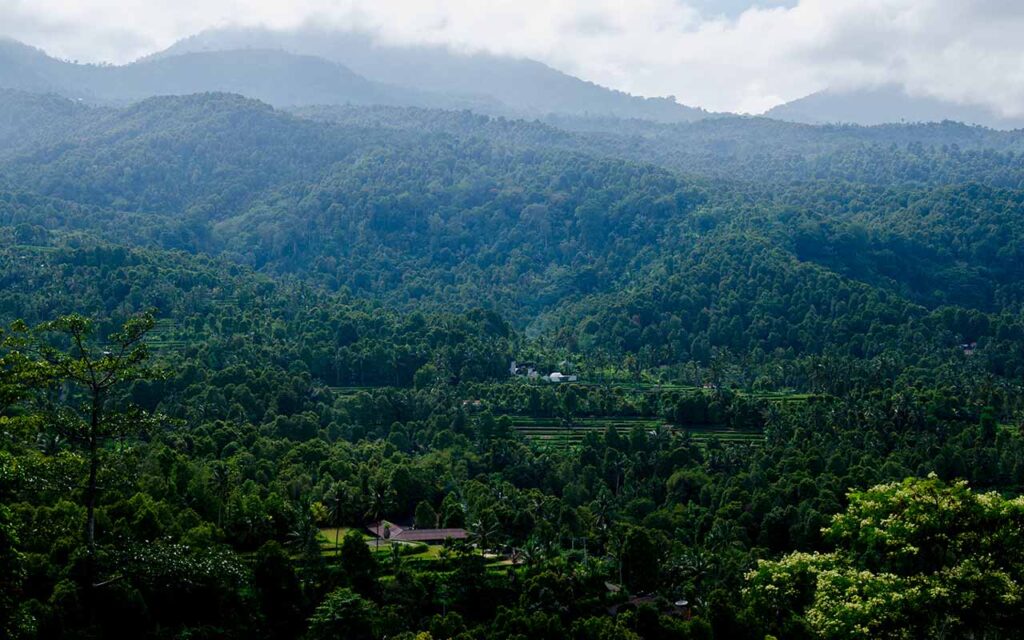
But Putu Ardana didn’t want to just stay silent and curse the situation. Whatever challenges lie ahead, they must seem difficult and heavy; they must be faced with joy; and continue to do what can still be done.
He is determined to invite the people of the Catur Dalem Tamblingan Traditional Village to put Balinese culture back on its dignity. One of them was by initiating the formation of Bagaraksa Alas Mertajati (Brasti). Namely, an association of young people who have the will and initiative to maintain the traditions and preservation of Alas Mertajati.
These young people now have militancy as members of indigenous communities who are able to fight the stigma of being an ignorant and backward group. They are actively mapping the Alas Mertajati area and actively documenting all cultural activities.
Putu Ardana is also preparing to establish an indigenous school. Schools that elaborate more on local wisdom. The teachers will come from practitioners in their field who can become facilitators in the student learning process.
This is a form of complaint against the education system, which tends to homogenize and group students into certain categories. He is imagining a school that gives students the freedom to learn and explore their passions.
These various efforts to conserve and empower indigenous communities in his village have apparently been heard by a number of campus alumni. As a form of support and appreciation, in 2022, Putu Ardana received the “Alumni Serving Awards” from the Gadjah Mada University Alumni Family (KAGAMA).
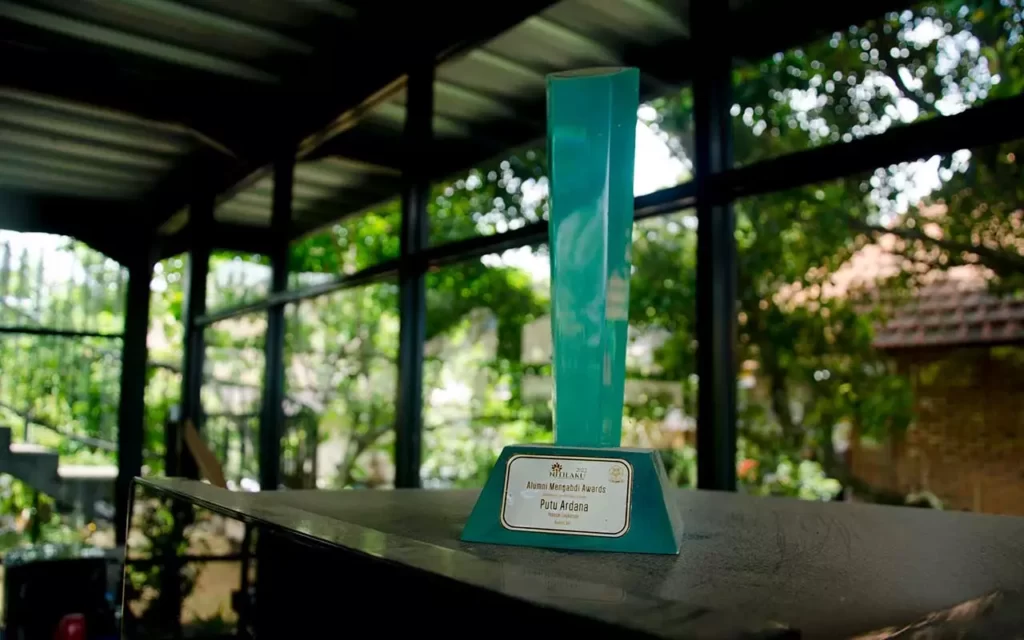
The sun was rising higher, and the light began to reach the terrace of Café Don Biyu.
Putu Ardana took me to one of the other buildings in front of where he lived. He showed the room where he usually roasts coffee beans that are processed from his own garden or from farmers. The local product roasting machine has a capacity of 2 kg per batch. Unfortunately, at that time, the machine was damaged.
It was getting to be noon. It turns out we chatted for quite a while. I said goodbye, but before that, I didn’t forget to buy a bag of Blue Tamblingan coffee. The plan is that tomorrow it will be included in a cupping event with coffee fans in Ubud.
The sky was still quite bright, and I drove my motorcycle not too fast to leave Munduk Village. Occasionally, thick wisps of mist would pour in from the lake, penetrate the gaps in the Alas Mertajati trees, and then cover the road. It felt like I was flying through the clouds.
Visibility became increasingly obstructed by thick fog, so I decided to stop. Stop at one of the many blank halls found on the side of the road. Enjoy the sensation of the atmosphere above the clouds while imagining how long this sacred area will be able to survive the onslaught of many interests.
Hopefully, the coffee and the story of Lake Tamblingan conservation will continue with Putu Ardana and the younger generation of members of the indigenous community in Munduk Village.

